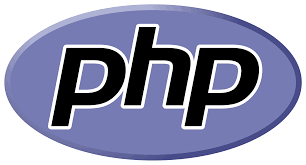In today’s interconnected world, cybersecurity is no longer just a concern for large corporations. Small businesses are also prime targets for cybercriminals. Understanding the fundamentals of cybersecurity is essential to protect your business, customer data, and reputation. In this blog, we’ll explore the foundational principles of cybersecurity and practical steps to strengthen your digital defenses.
1. The CIA Triad: Confidentiality, Integrity, Availability
The CIA triad forms the cornerstone of cybersecurity practices:
- Confidentiality: Ensures that sensitive information is accessible only to authorized personnel. Encrypting data, using strong passwords, and implementing access controls help safeguard confidentiality.
- Integrity: Protects data from being altered or tampered with by unauthorized users. This is crucial for ensuring the accuracy and reliability of business records. Using hashing and checksums can verify that data remains unchanged.
- Availability: Guarantees that data and systems are available to authorized users when needed. This means ensuring your website, software, and services are online and functional, supported by backup systems and defenses against attacks like Distributed Denial of Service (DDoS).
2. Understanding Threats and Vulnerabilities
To defend against cyberattacks, you need to understand the risks:
- Threats: These can be malicious actors (hackers), software (malware), or even natural disasters that could compromise your data and systems.
- Vulnerabilities: Weaknesses in your security infrastructure that threats can exploit. For instance, unpatched software, weak passwords, or outdated systems.
- Risk: The likelihood of a threat exploiting a vulnerability. Risk assessment is key to prioritizing which vulnerabilities need immediate attention and which can be managed over time.
3. Common Cybersecurity Threats
Cyber threats come in many forms, and it’s important to recognize some of the most common ones:
- Malware: Malicious software like viruses, ransomware, or spyware can infiltrate your system, steal data, or lock files until you pay a ransom.
- Phishing: Cybercriminals trick employees into providing sensitive information, like login credentials or financial details, through deceptive emails or messages.
- Ransomware: A form of malware that encrypts your business’s data and demands payment for its release. This is becoming a growing threat to businesses of all sizes.
- Social Engineering: Attackers use psychological manipulation to deceive employees into disclosing confidential information, often via phone or email.
4. Strengthening Authentication and Authorization
Implementing strong authentication and authorization measures ensures that only the right people can access your business’s systems and data:
- Authentication: Verifying the identity of a user before granting access. Multi-factor authentication (MFA), which requires more than just a password (e.g., a verification code sent to your phone), is one of the best ways to secure your systems.
- Authorization: Once authenticated, authorization defines what a user is allowed to do. This ensures employees only have access to the resources they need.
5. Encryption: Protecting Your Data
Encryption is a critical defense mechanism that scrambles data, making it unreadable to unauthorized users. Only those with the correct decryption key can access the information. Encryption is used in various areas, from securing customer data to encrypting email communications.
- Symmetric Encryption: Uses the same key for both encryption and decryption.
- Asymmetric Encryption: Uses a pair of keys—one for encryption (public) and one for decryption (private). This is often used in secure communications.
6. Firewalls and Network Security
A firewall is your business’s first line of defense against external threats. It acts as a barrier between your trusted internal network and untrusted external networks, such as the internet.
- Firewalls: These monitor incoming and outgoing traffic, blocking potentially harmful data while allowing legitimate traffic through.
- Intrusion Detection Systems (IDS) & Intrusion Prevention Systems (IPS): IDS detects suspicious activity, while IPS blocks and prevents attacks before they can cause damage.
7. The Zero Trust Model
Gone are the days when businesses could assume that internal networks were safe. The Zero Trust security model assumes that both internal and external networks can be compromised. Therefore, every request for access, whether from within the office or remotely, is treated as potentially suspicious and must be verified.
8. Patching and Updates
One of the most common ways cybercriminals gain access to systems is through unpatched software vulnerabilities. Regularly updating your operating systems, applications, and security software ensures that known vulnerabilities are fixed, making it harder for attackers to exploit weaknesses.
9. Incident Response Plan: Be Prepared
Even with the best security measures, breaches can happen. Having an Incident Response Plan (IRP) is crucial for minimizing damage and restoring operations quickly:
- Preparation: Identify roles and responsibilities within your team for handling incidents.
- Detection and Analysis: Implement systems to detect breaches early and assess the scope of the damage.
- Containment and Eradication: Isolate affected systems to prevent further damage and remove the source of the attack.
- Recovery: Restore systems and data from backups to resume normal business operations.
- Post-Incident Analysis: Learn from the incident to improve your defenses and prevent future attacks.
10. Backup and Recovery: Your Lifeline in a Crisis
Regularly backing up your data is one of the simplest and most effective ways to protect against ransomware and other attacks. Make sure backups are stored securely and tested regularly to ensure they can be used for recovery when needed.
11. Training and Awareness
Your employees are often the first line of defense against cyber threats. Regular cybersecurity training helps them recognize potential attacks, such as phishing emails, and understand best practices for safe browsing, email usage, and data handling.
12. Compliance with Regulations
Many industries have strict regulations around data security, such as GDPR for European businesses or HIPAA for the healthcare sector. Ensuring compliance with these regulations not only protects your business from legal repercussions but also strengthens your overall cybersecurity posture.
Conclusion: A Secure Business is a Thriving Business
Cybersecurity is not just a technical issue; it’s a business issue. By laying a strong foundation in cybersecurity, you can protect your company from costly breaches, ensure the trust of your customers, and safeguard your reputation. Whether you’re a small business owner or managing a growing company, understanding and implementing these key principles will help keep your business secure in an ever-evolving digital landscape.
For more tips on how to strengthen your business’s security, feel free to contact us for a personalized consultation!







